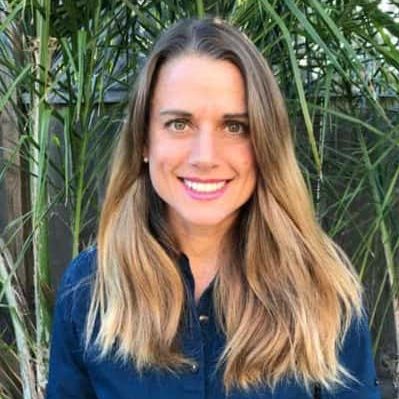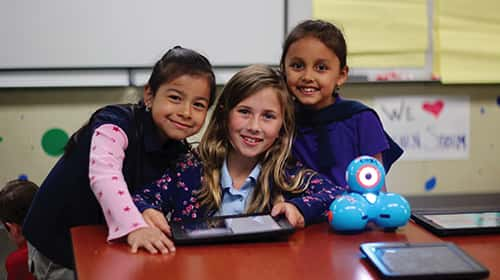 A volatile economy over the past decade has led to drastic reductions in government spending, which has all led to severe cuts to California’s public schools. Resulting budgetary adjustments relentlessly impacted the academic offerings, services and extra amenities that school districts can provide to their students. Even though government reductions have stopped (for now), funding to our local schools has not yet returned to earlier levels, and educational foundations—whether for a single school or an entire district—have been crucial in bridging the funding gap between what parents and teachers want for their children and what school districts can provide.
A volatile economy over the past decade has led to drastic reductions in government spending, which has all led to severe cuts to California’s public schools. Resulting budgetary adjustments relentlessly impacted the academic offerings, services and extra amenities that school districts can provide to their students. Even though government reductions have stopped (for now), funding to our local schools has not yet returned to earlier levels, and educational foundations—whether for a single school or an entire district—have been crucial in bridging the funding gap between what parents and teachers want for their children and what school districts can provide.
“Partnerships between businesses, families, educational foundations and the school system are really crucial to the health of our school—and to a vibrant community,” says Susan Mathews, executive director for School Fuel, the Novato Foundation for Public Education, which started in 2003 in response to significant budget cuts and serves 15 schools (7,800 students) throughout Novato. “The more collaboration there is between these different groups, the better it’s going to be for the future of our communities.”
Education Foundations exist, bottom line, to assist and support the initiatives of public school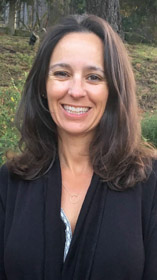 districts.They do so, generally, by operating as private, nonprofit organizations, separate from school districts or local governments, to raise funds that augment, supplement or complement programs and activities currently being provided by the district. Because of their nonprofit status, educational foundations rely on local business and their communities for funding and support. As examples, Mathews says Bank of Marin provides School Fuel with many employee volunteers, Nugget Market and Whole Foods provide in-kind donations and Navitas sponsors a team of employees for the foundation’s annual fundraising bike tour.
districts.They do so, generally, by operating as private, nonprofit organizations, separate from school districts or local governments, to raise funds that augment, supplement or complement programs and activities currently being provided by the district. Because of their nonprofit status, educational foundations rely on local business and their communities for funding and support. As examples, Mathews says Bank of Marin provides School Fuel with many employee volunteers, Nugget Market and Whole Foods provide in-kind donations and Navitas sponsors a team of employees for the foundation’s annual fundraising bike tour.
Stepping up in times of need
Many of the North Bay foundations started in response to economic downturns, when state funding for schools was sometimes drastically cut. While government educational reductions have stopped over the past few years, funding is still only back up to the level it was in 2007. Many schools are still struggling to provide services that current levels of funding haven’t been able to restore. Educational foundations are more nimble and respond more quickly to needs than school districts (which have to follow certain government protocols) which has allowed more programs to be implemented.
“While [school] funding has improved in California, it doesn’t come close to what other states, such as New York, spend per student. California remains near the bottom,” says Michelene Moayedi, executive director of the HeadsUp San Rafael Public Education Foundation, which started in 1982 and now serves 12 public schools (7,200 students). “So it’s just about identifying the current need and what you can do that has the most impact.”
 Often school districts can’t or won’t risk using funds on an unproven program. This is where educational foundations can be invaluable, providing funds to implement a trial program, which, if successful, can later be continued through district funds. A high school science teacher at a St. Helena Public School, for example, wanted to conduct an anatomy class, but the district wouldn’t pay for cat cadavers for the students to dissect. The St. Helena Public Schools Foundation stepped in with funding for the first two years. The class became such a success that the district eventually decided it was a necessary part of the curriculum and took over funding.
Often school districts can’t or won’t risk using funds on an unproven program. This is where educational foundations can be invaluable, providing funds to implement a trial program, which, if successful, can later be continued through district funds. A high school science teacher at a St. Helena Public School, for example, wanted to conduct an anatomy class, but the district wouldn’t pay for cat cadavers for the students to dissect. The St. Helena Public Schools Foundation stepped in with funding for the first two years. The class became such a success that the district eventually decided it was a necessary part of the curriculum and took over funding.
“That’s the type of thing we fund,” says Cecilia Raffo, president of the St. Helena Public Schools Foundation, which covers four schools (1,200 students). The foundation was formed in 1983 by concerned parents and community members in response to state budget cuts that resulted from the 1978 passage of Proposition 13. “Those are the things we like to do—innovative, new things. Then hopefully the district will see it as something worthwhile and take it on,” she adds.
Working together
 Educational foundations are experiencing more collaboration with school districts, parent groups and their communities over the past decade. In many cases, foundations faced a steep learning curve to determine how they best fit in and what they could accomplish most efficiently and effectively.
Educational foundations are experiencing more collaboration with school districts, parent groups and their communities over the past decade. In many cases, foundations faced a steep learning curve to determine how they best fit in and what they could accomplish most efficiently and effectively.
“We’re finally all on the same page,” says Raffo. “In some ways, [the parent groups and our foundation] were often funding the same things, so we started to work together. With the district, it’s been important for us to see where we fit in. We’re able to provide the enhancements that the district isn’t. It provides the salaries, curriculum, buildings and the like, but when the teachers want something above and beyond, they rely on the foundation and the parent groups.”
Funds raised by educational foundations have gone to sponsor programs in the arts, music, technology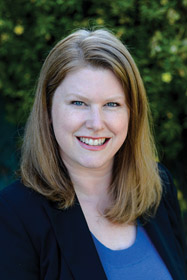 and science, as well as field trips—essentially, any area a school district lacks funds to cover. In some areas, funds have gone above academics and electives to also play an essential part in increasing health and wellness for students, funding everything from health and nutrition programs to mental counseling. The Napa Valley Education Foundation (NVEF), for example, was able to secure a $1.2 million federal grant to create wellness centers that screen every 6th through 8th grader in the district for behavioral health needs.
and science, as well as field trips—essentially, any area a school district lacks funds to cover. In some areas, funds have gone above academics and electives to also play an essential part in increasing health and wellness for students, funding everything from health and nutrition programs to mental counseling. The Napa Valley Education Foundation (NVEF), for example, was able to secure a $1.2 million federal grant to create wellness centers that screen every 6th through 8th grader in the district for behavioral health needs.
“We’ve since seen the number of students served go way up,” says Jennifer Stewart, executive director of NVEF, which covers 30 schools (18,000 students) in the Napa Valley Unified School District. “In partnership with nonprofits, county mental health and the internal support from school district counselors and social workers, we’re creating a system of care at the middle school level that, I think, will have a lasting effect on our students. We’re addressing their critical health and security needs before they unravel from them. Long term, this helps with their attendance, grades and overall health.”
It takes a village
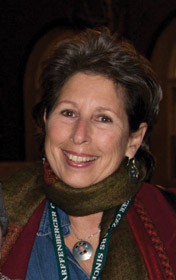 Recent history has shown that parents alone can’t bridge the gaps in school funding, nor can most school districts and local governments afford a lot of the extra programs and enrichment resources teachers require. It takes partnerships and collaboration with the local community and businesses to help students—our future workers and community members—to thrive. A major challenge for educational foundations is to continually diversify fundraising efforts without overburdening the generosity of the current donor base.
Recent history has shown that parents alone can’t bridge the gaps in school funding, nor can most school districts and local governments afford a lot of the extra programs and enrichment resources teachers require. It takes partnerships and collaboration with the local community and businesses to help students—our future workers and community members—to thrive. A major challenge for educational foundations is to continually diversify fundraising efforts without overburdening the generosity of the current donor base.
“One big challenge is how to fund scholarships, grants, teacher wishlists and the like without overtaxing our small community,” says Karen Alves, vice president of the Windsor Educational Foundation, which was founded in the 1980s to support all schools in the Windsor Unified School District. “We’re building community by reaching out to businesses and corporations to partner with us and raise funds for our students’ needs,” she says. “We want to offer the opportunity for more people to join in so we can increase our grant funds and offer more scholarships to more students.”
Fortunately, there’s more than one way to support educational foundations, (and, therefore, our schools). Businesses throughout the North Bay have come up with creative ways to pitch in, not only by contributing money, but also through in-kind donations of goods and services for fundraising events and auctions. Bregante + Company, LLP, a Novato accounting firm, donates space in their office for School Fuel, and even does its taxes without charge. Matt & Jeff’s carwash, School Fuel’s very first business sponsor, donates one penny for every gallon of fuel sold; this seemingly small gesture has amounted to more than a whopping $200,000 in 13 years.
“There’s no one way for corporate sponsors [to contribute],” says Mathews. “It depends on what appeals to them. We have some corporate sponsors that provide us with in-kind donations for events. Some corporate sponsors are most interested in visibility at our events, so they sponsor a team in our biking event. Others are more interested in finding volunteer opportunities for their employees.”
to them. We have some corporate sponsors that provide us with in-kind donations for events. Some corporate sponsors are most interested in visibility at our events, so they sponsor a team in our biking event. Others are more interested in finding volunteer opportunities for their employees.”
In 2016, the Windsor Educational Foundation reached out to civic groups with much success, specifically for a scholarship project for deserving Windsor High School (WHS) seniors to continue their education after graduation. In 2015, the scholarship program was redesigned as part of a mentorship program tied to a WHS student’s senior project.
“This year we’re reaching out to local civic groups including the Active 20/30 Club Santa Rosa and the Active 20/30 Club Healdsburg, to partner with us for the WE Foundation’s scholarship program, which is offered to all seniors at Windsor High School,” says Alves. “We’re matching them, dollar for dollar, and they donated together $8,000. We’ll be able to award $20,000 in scholarships for the 2017/2018 school year.”
Doing good is good for business
Many businesses today realize that doing good is good for business. Messaging around the causes a business supports has less to do with branding and more to do with how a business is engaging its community. Research shows that these connections factor into consumer decision-making, and the success of new companies whose business model includes a percentage going to designated charities and organizations supports that.
“It’s a whole different way of looking at it,” says HeadsUp’s Moayedi. “Before, it was a lot about marketing and sponsoring events for branding purposes and what was in it for the marketing piece. Now, it’s more about showing how the businesses are engaging their community. By donating to their local education foundations, companies are not only supporting nonprofits but also showing support for their employees and customers, many of whom have children and grandchildren in these schools. It’s a far greater impact for businesses than merely a brand on a banner.”
While every educational foundation’s purpose is to support the priorities and initiatives of its specific school district and to provide the best educational experience possible for every student, their reach goes beyond the programs, scholarships and services they’re helping to provide right now. By ensuring that all students have the same opportunities to secure a successful future, they’re guaranteeing a future of thriving communities.
“An investment in our students is an investment in our economy,” says NVEF’s Stewart. “Our students are our future. They will be our future workers and our future neighbors. They’ll be the ones coaching soccer games, and leading these nonprofits in 30 years. It’s important to give them a running start.”
Everyone Needs a Hero
 Project H.E.R.O. (Helping Everyone Receive Opportunities) is a special fundraising program developed through the Windsor Educational Foundation (WE), to raise money for much-needed programs such as physical education, music, technology and science camp among others. Without this supplemental funding, district schools would most likely not be able to afford these important offerings.
Project H.E.R.O. (Helping Everyone Receive Opportunities) is a special fundraising program developed through the Windsor Educational Foundation (WE), to raise money for much-needed programs such as physical education, music, technology and science camp among others. Without this supplemental funding, district schools would most likely not be able to afford these important offerings.
What sets the H.E.R.O. project apart is that it targets the needs of each individual school in the district (there are nine) and involves the students in the decision-making process. If the students have a project they’d like implemented at their school or in their classroom, they raise the funds through donations and sponsorships, which are then administered through WE. In 2015, the H.E.R.O. project raised $75,000 and, unlike other fundraisers (like selling cookies or wrapping paper, where only a portion of the funds raised go back to the schools), 100 percent of the money goes back into programs for the children.
“The students get so excited about helping their schools that they get creative in how they work to raise money,” says Jen Rota, WE board member. “Kids have baked, painted rocks into ladybugs, sold their old toys and held garage sales. One student created ‘NickCycle.’ He would trip off a bucket to the neighbors for them to fill with recycling, then he’d collect and turn in the money for H.E.R.O. It’s been so fun to see the creativity and the kids ‘working’ instead of feeling entitled.”
Rota meets with all Windsor school principals during the summer to establish a wish list of programs. This year, two of the schools are having a competition for which can raise the most funds. A few factors that have helped the fundraising process is having parents tap into their employee-matching programs at work, and now anyone is able to go on our website and submit a donation. They have the choice to make either a one-time gift or a recurring monthly donation, and the student gets the credit. “Our big push this year is to really work with the community and help one another,” says Rota.
SchoolsRule
SchoolsRule, a coalition of more than 20 public school foundations that works in partnership with the Marin County Office of Education, is an ideal example of the spirit and strength of collaboration to bring quality education to every student in Marin. Its objective is to engage the community in a discussion about their schools and important issues facing education, to encourage action through volunteering in the schools and to work together to raise funds for students in all public schools, regardless of economic differences.
In Marin County, as in other parts of the North Bay the funds raised by school foundations can be very disproportional—with more affluent areas being able to raise substantially more funds than other areas. In San Rafael, for example, 63 percent of students are in a free and reduced lunch program, with more English as a second language (ESL) students and many living in poverty. By working as a single unit to secure new financial support, SchoolsRule funds can be distributed annually among the public schools on a student-by-student basis countywide, which benefits each student equally.
Michelene Moayedi, executive director of the HeadsUp San Rafael Public Education Foundation, which benefits from SchoolsRule financial distributions, says the coalition has been invaluable in securing large donations that it simply couldn’t obtain as a stand-alone foundation.
“It’s great, because SchoolsRule represents 20 public education foundations—all in Marin county—so it’s able to go corporations, like Wells Fargo, Kaiser or any major corporation that does community giving on a large scale,” says Moayedi.
“Schools Rule is able to get larger donations from those types of companies and then distribute it. It’s really exciting to get that level of support and to have access to the higher level at these corporations. I can go to local businesses and local branches to solicit donations, but they’ll only reach certain dollar amounts. This is a whole different level of giving.”
In October 2012, the first SchoolsRule funds, totaling $220,000, were distributed to Marin County education foundations and school districts to support programs focusing on literacy, the arts and technology. By the third distribution in 2014, fundraising had reached $440,954.


